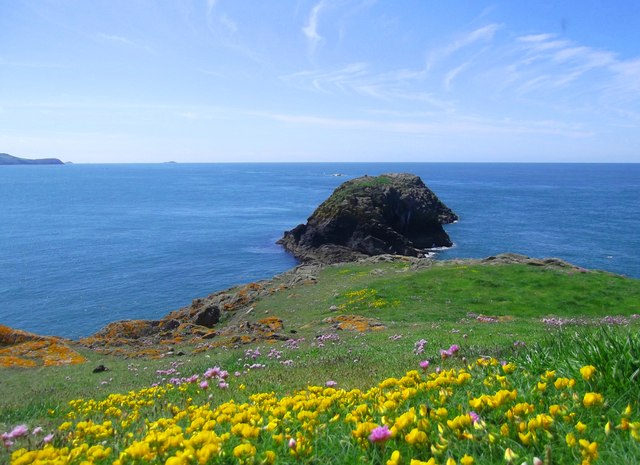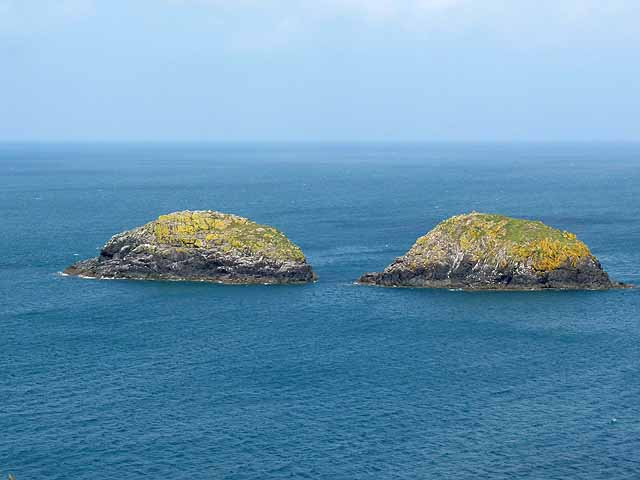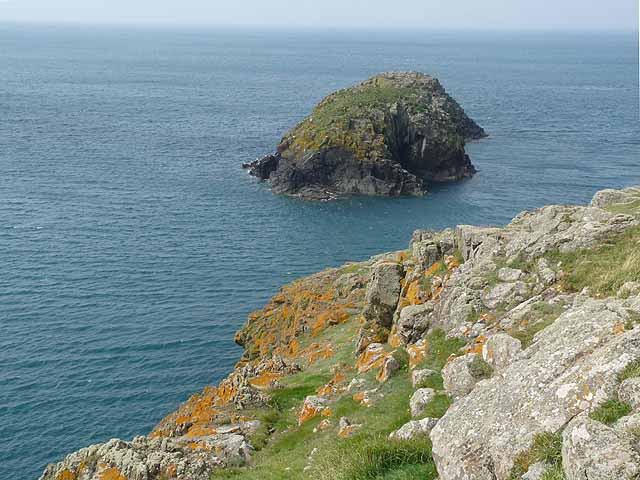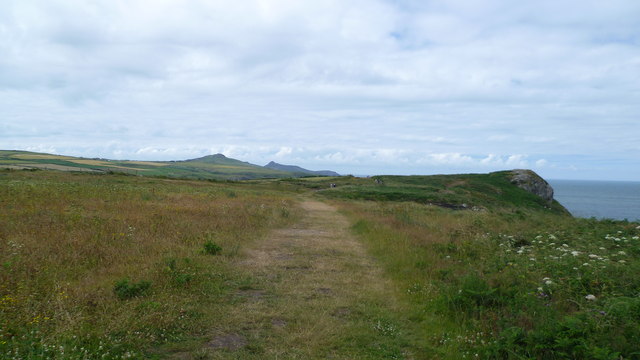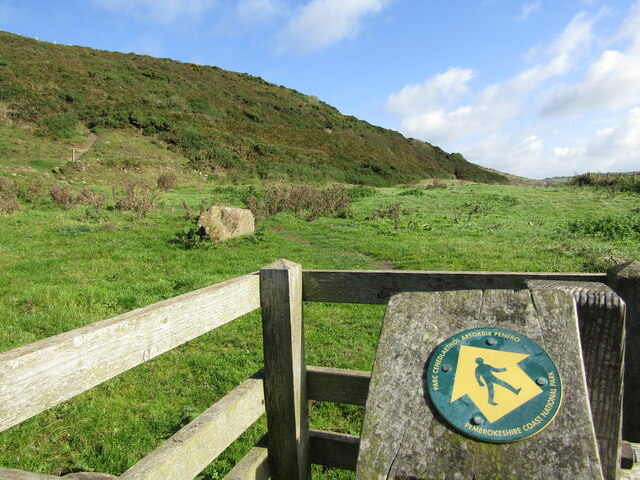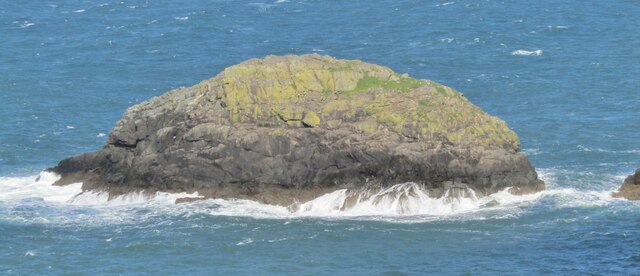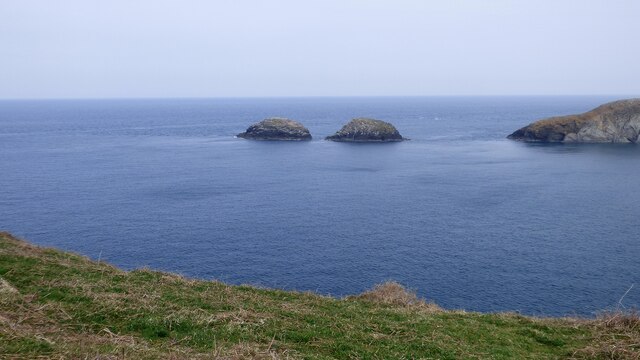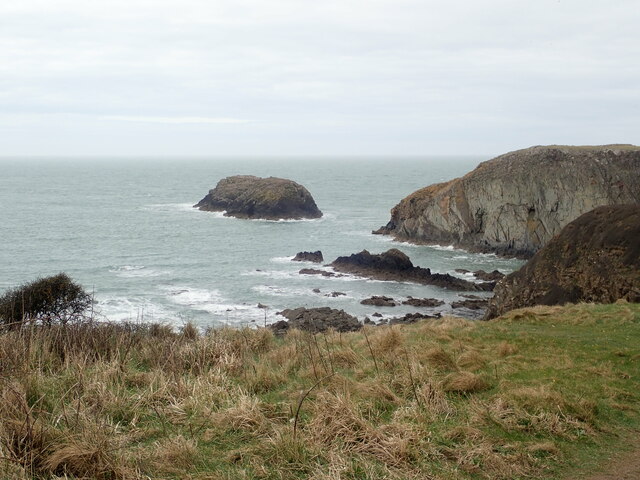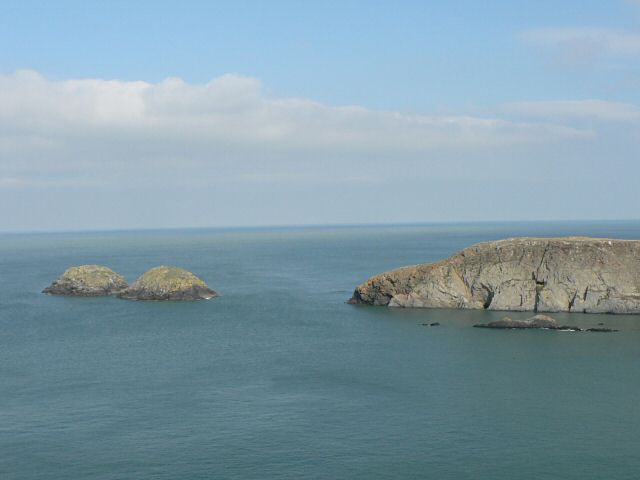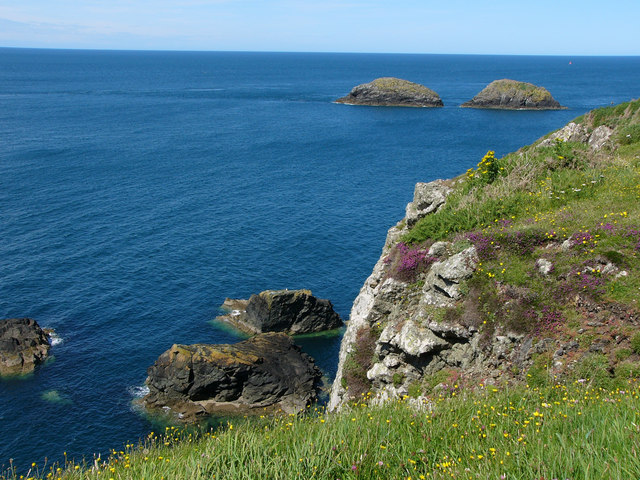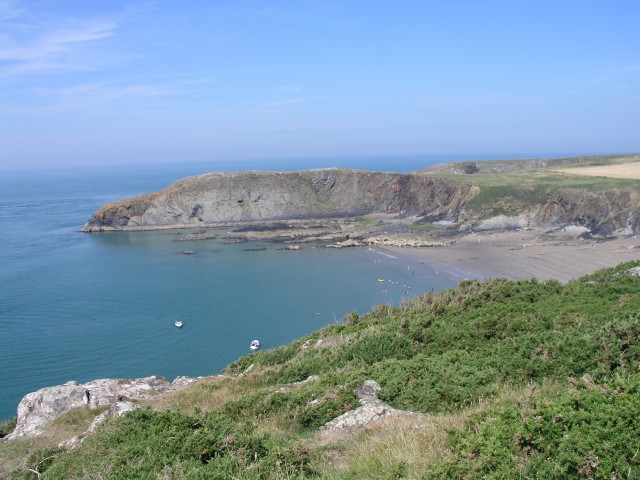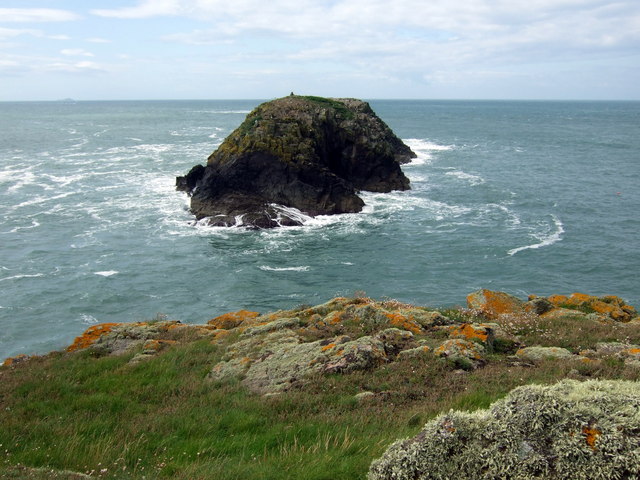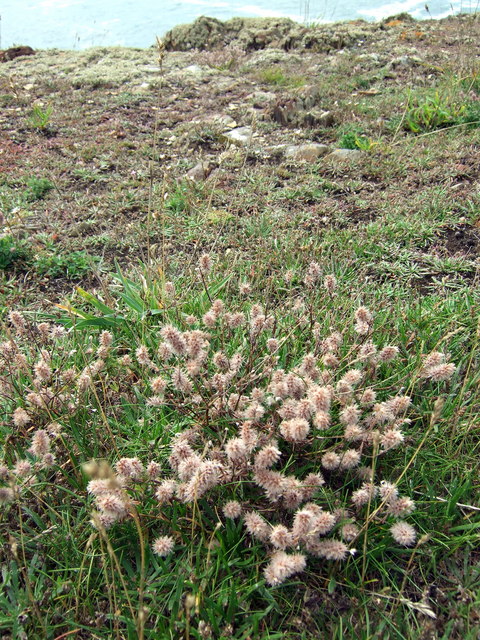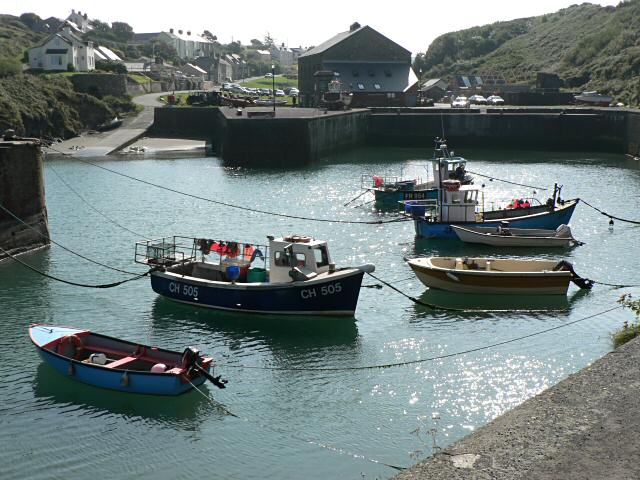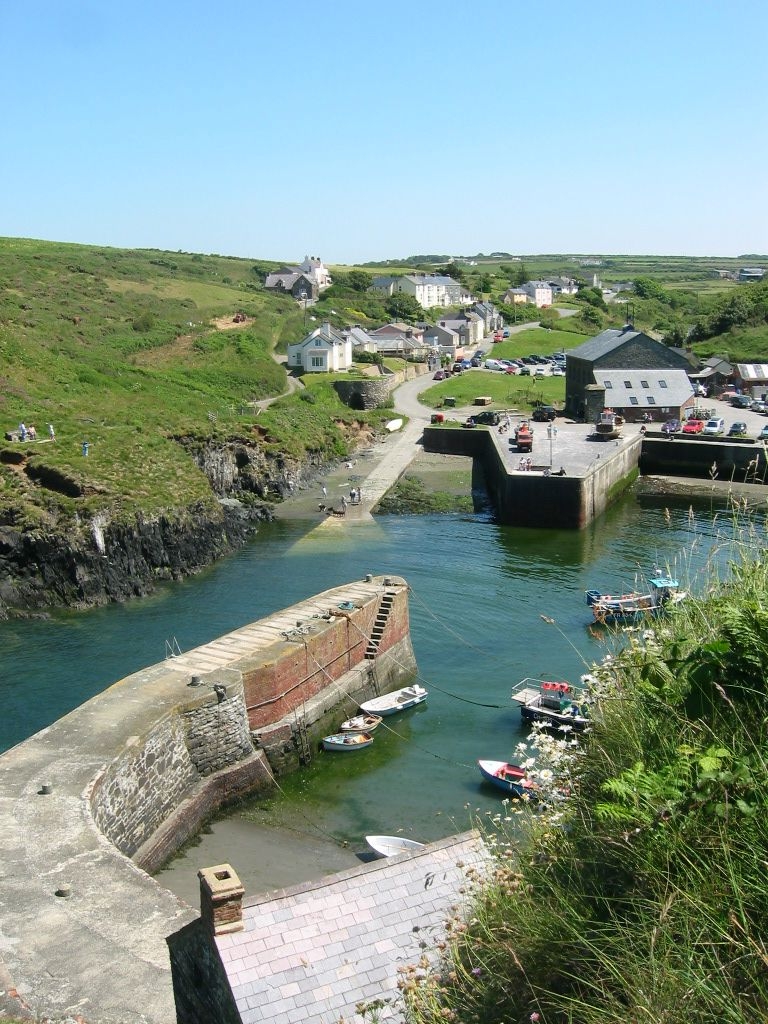Porth-gain
Bay in Pembrokeshire
Wales
Porth-gain
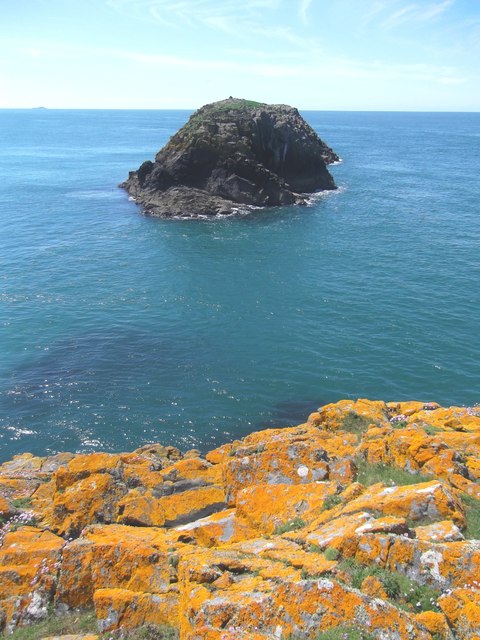
Porthgain is a picturesque coastal village located on the north coast of Pembrokeshire, Wales. Nestled in a small bay, it offers stunning views of the Irish Sea and is surrounded by rugged cliffs and beautiful countryside.
The village has a rich history, originally being a thriving industrial port in the late 19th and early 20th centuries. It was a hub for slate and brick production, and remnants of the industry can still be seen today, with old quarry buildings and a disused brickworks scattered around the village.
Porthgain is also known for its charming harbor, which was once used to export the locally produced slate and bricks. Today, the harbor is a popular spot for fishing boats and pleasure craft, creating a vibrant and lively atmosphere. Visitors can enjoy a leisurely stroll along the harbor wall, taking in the views and perhaps spotting some local wildlife.
The village is home to several restaurants and pubs, offering a range of delicious seafood dishes and traditional Welsh cuisine. It is a popular destination for food lovers, with its fresh and locally sourced ingredients.
The area surrounding Porthgain is a haven for nature enthusiasts, with scenic coastal walks, dramatic cliffs, and stunning beaches nearby. The Pembrokeshire Coast National Park is also within easy reach, providing opportunities for outdoor activities such as hiking, birdwatching, and watersports.
Overall, Porthgain is a charming and historic coastal village that offers a blend of natural beauty, cultural heritage, and gastronomic delights, making it a popular destination for tourists and locals alike.
If you have any feedback on the listing, please let us know in the comments section below.
Porth-gain Images
Images are sourced within 2km of 51.949904/-5.1833324 or Grid Reference SM8132. Thanks to Geograph Open Source API. All images are credited.
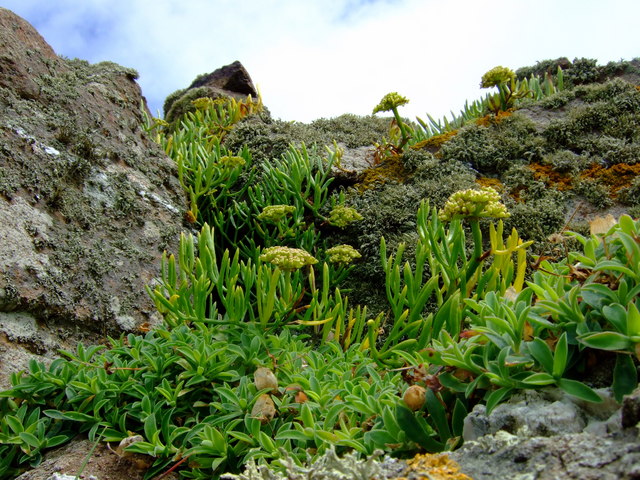

Porth-gain is located at Grid Ref: SM8132 (Lat: 51.949904, Lng: -5.1833324)
Unitary Authority: Pembrokeshire
Police Authority: Dyfed Powys
What 3 Words
///shuttered.props.unicorns. Near Llanrhian, Pembrokeshire
Nearby Locations
Related Wikis
Porthgain
Porthgain (Welsh for fair/beautiful port or more likely 'chisel port' from the Welsh 'porth' meaning port and 'gaing' meaning chisel as used by the many...
Porthgain Railway
The Porthgain Railway was a 3 ft (914 mm) narrow gauge industrial railway connecting the Pen Clegyr and St. Bride's quarries with Porthgain harbour. It...
Llanrhian
Llanrhian is a small village, community and parish in Pembrokeshire in west Wales, near the coast, south of Porthgain village. The community of Llanrhian...
Portheiddy Moor
Portheiddy Moor is a Site of Special Scientific Interest (or SSSI) a little to the east of Abereiddy in Pembrokeshire, South Wales. It has been designated...
Nearby Amenities
Located within 500m of 51.949904,-5.1833324Have you been to Porth-gain?
Leave your review of Porth-gain below (or comments, questions and feedback).
